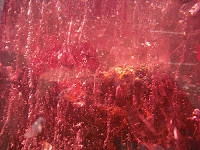Luckily for you guys, Marianne used to work in public health and knows this epidemiology stuff inside out. So here's the abbreviated but reliable Inside Stuff, based on questions I've been asking her over the past couple of days:
1. Is it really that serious?
Could be. The new strain is the result of a reassortment event (the technical term for various strains swapping around genetic material with each other), which means that it's so new nobody is immune to it. It can be transmitted person-to-person, and human contact is a wonderfully efficient way to spread a disease. Plus, it appears to hit young and middle-aged adults as strongly as it does children and the elderly -- which is one of the factors associated with pandemics.
2. How fast is this thing going to spread?
If it is a pandemic and the pattern of earlier pandemics holds true, the sudden appearance of the disease will be followed by a gradual tapering-off of infections through the summer. Then, in the fall, just when we're beginning to feel annoyed at those public health people for scaring us all spitless, it will reappear, spreading rapidly through the winter to become exactly the sort of thing we all fear it will.
Then again, it might just peter off and dwindle into insignificance. There's no way of knowing. Biology is a messy science.
3. What are They going to do to protect me?
Forget about closing the borders. The flu is already here. Right now, the drug manufacturers are working on a vaccine with all the verve and enthusiasm of folks who can make a huge pile of money while incidentally Saving the World. The vaccine will be manufactured over the summer and made available everywhere in the fall. Trust me, you'll be hearing about it.
If it all works out the way they hope it will, enough people will take the vaccine to short-circuit the pandemic, and a major problem will become a minor one.
If not, well, a lot of people who didn't take the vaccine will get sick, and a certain number of them will die.
4. What should I do to protect myself?
Get the flu shot when it comes available. And wash your hands frequently. I know it sounds silly. But all the public health people I know -- and I know a lot of them -- swear it's one of the best way to stop the spread of disease.
This has been my first and -- unless this thing does go pandemic -- probably last public service announcement. Next post, I return to the usual silliness and ruthless self-promotion. I promise.
Cool stuff for pandemic watchers . . .
I'm on the road with a wonky interface, so if you'd like to see, here's the URL:












